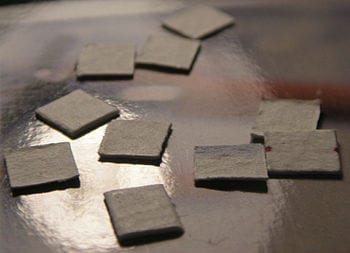
Credit: Current Biology, Lehahn et al.
“This patch of ocean fixes about as much carbon as an equivalent patch of rainforest and then almost immediately turns much of it over”
Algae might seem easy to ignore, but they are the ultimate source of all organic matter that marine animals depend upon. Humans are increasingly dependent on algae, too, to suck up climate-warming carbon dioxide from the atmosphere and sink it to the bottom of the ocean. Now, by using a combination of satellite imagery and laboratory experiments, researchers have evidence showing that viruses infecting those algae are driving the life-and-death dynamics of the algae’s blooms, even when all else stays essentially the same, and this has important implications for our climate.
According to results reported in the Cell Press journal Current Biology on August 21, a single North Atlantic algal bloom, about 30 kilometers in radius, converted 24,000 tons of carbon dioxide from the atmosphere into organic carbon via a process known as carbon fixation. Two-thirds of that carbon turned over within a week as that bloom grew at a very rapid rate and then quickly met its demise. A closer look at those algae revealed high levels of specific viruses infecting their cells.
To put it in perspective, Assaf Vardi of the Weizmann Institute of Science in Israel says that this patch of ocean fixes about as much carbon as an equivalent patch of rainforest and then almost immediately turns much of it over.
“This is, of course, only one patch out of numerous co-occurring patches in other parts of the Atlantic Ocean,” adds Ilan Koren, also of the Weizmann Institute, not to mention those algal blooms that appear in other seasons and ecosystems. “While the impact that viruses have on the entire ecosystem was previously estimated to be very large, we provide the first approach to quantify their immense impact on open ocean blooms.”
The Latest on: Algal blooms
[google_news title=”” keyword=”Algal blooms” num_posts=”10″ blurb_length=”0″ show_thumb=”left”]
via Google News
The Latest on: Algal blooms
- Suspected algal bloom spotted on Duck Lakeon April 26, 2024 at 10:06 am
The Allegan County Health Department is telling residents to avoid any water-related activities on Duck Lake after a suspected bloom of blue-green algae was spotted.
- What’s in Bradenton-area waters? And why does it stink? What to know about the algaeon April 26, 2024 at 4:32 am
Commonly known as Lyngbya, and also sometimes called “gumbo,” “snot grass,” “fireweed” or “mermaid’s hair,” it is a kind of blue-green algae that has detached from the sea bottom and is now ...
- Multiple Blue-Green Algae Alerts Issued For Polk Countyon April 25, 2024 at 11:56 am
POLK COUNTY, Fla. - The Florida Department of Health in Polk County (DOH-Polk) has issued a Health Alert for the presence of harmful blue-green algae in multiple areas of Polk County. ・Lake Conine - ...
- Organization looking to reduce algae blooms in Togus Pondon April 25, 2024 at 10:46 am
Algae blooms can be very dangerous. Once it starts taking over and if left untreated, it eventually can squeeze much needed oxygen from its ecosystem.
- Beachgoers urged to avoid algal blooms in sea or risk skin rashon April 24, 2024 at 6:15 pm
Residents in Perth should avoid swimming, diving, kayaking, jet-skiing, and fishing in areas of scummy water, health officials say.
- Team effort at Togus Pond in Augusta takes aim at toxic algae bloomson April 24, 2024 at 5:00 pm
The phosphorous is a source of nutrients for algae that, when it blooms in hot summer months, can turn the water green and stinky — and in extreme cases even render it toxic. By capturing the ...
- Algal Bloom Sparks Health Concerns for Australian Beachgoers!on April 24, 2024 at 8:55 am
Alarming reports from Australian coastal cities, notably Perth, warn beachgoers to steer clear of beaches tainted with algal blooms.
- Beachgoers warned to stay out of water after algal bloom erupts along coastlineon April 24, 2024 at 4:40 am
Beachgoers have been warned to avoid coming into contact with an algal bloom that has erupted along parts of a city coastline.
- WA Health issues algal bloom warning for Perth coastline as marine water quality issues persiston April 24, 2024 at 2:26 am
WA Health has warned keen swimmers and beachgoers alike to stay out of the water following a surge in algal blooms across parts of Perth’s coastline.
- New tool for algal bloom mitigation is making breakthrough results in Utah, scientists sayon April 23, 2024 at 11:32 am
Scientists are testing a new tool that aims to help suppress algal blooms in bodies of water, and experts say the device is producing breakthrough results.
via Bing News










